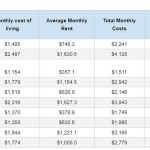Longevity Strategies That May Be Highly Counterproductive
- Longevity studies have found that tryptophan restriction helps achieve the longest lifespan extension, followed by cysteine and methionine restriction. Tryptophan and methionine are essential amino acids, so you do need some, but your daily requirement of these amino acids is very small
- Research shows that restricting daily methionine intake to a maximum of 2 milligrams per kilogram body weight can reverse obesity in obese Type 2 diabetics
- While studies have shown that calorie restriction extends lifespan, a closer look suggests it’s not the fasting itself that is beneficial, but rather the restriction of inflammatory amino acids. Less food also means you’re exposed to less endotoxin that promotes chronic systemic inflammation
- Gelatin and/or glycine supplementation, can help counteract muscle breakdown in the elderly. Research shows that women given 20 grams of gelatin daily have a drastic decline in biomarkers for muscle breakdown
- Resistant starch can feed endotoxin-producing gut bacteria, thereby promoting inflammation. So, avoid low-glycemic starches, including cooked and cooled rice or potatoes, semi-raw oats, green mango and green bananas
In the April 11, 2023, podcast above, Dr. Paul Saladino interviews Georgi Dinkov about the benefits of fasting, the risks of carbs, the hazards of fatty acids and the root causes of diabetes and cancer.
It’s nearly two hours long, but well worth your time to listen to several times at normal speed if you want to learn more about these topics. Dinkov is probably the most educated student of Ray Peat, who passed away around Thanksgiving 2022, leaving behind a legacy of iconoclastic wisdom on how to optimize biological health.
Amino Acid Restriction and the Reversal of Obesity
As noted by Saladino, a well-accepted idea within the longevity industry is that to live long, you need to eat as little as possible. It’s basically a mentality of “no pain, no gain.” And that has also morphed into “more pain, more gain.” But is starving yourself really necessary?
As you’ll learn in this podcast, the answer is no. You don’t have to restrict calories. You can get the same results simply by restricting certain inflammatory amino acids.
According to Dinkov, longevity studies have found that tryptophan restriction helps achieve the longest lifespan extension, followed by cysteine and methionine restriction. Tryptophan and methionine are essential amino acids, so you do need some, but research suggests the daily need of these amino acids is very small. Dinkov explains:
“A study with obese Type 2 diabetic people found that if you restrict methionine intake per day to be no more than 2 milligrams per kilogram body weight [you can reverse the obesity].
For somebody who weighs 200 pounds that’s about 200 milligrams per day. That’s a really tiny amount, but it was sufficient to cover the requirements for methionine and resulted in in reversal of the obesity.
They also noticed that the subjects arrested metabolic rate increased. So, we have another finding here that goes against the story of the day, which is that if you increase your metabolism, it’s going to lead to reduced lifespan … This study found that that’s probably not the case, because when they increased the metabolic rate, these people became healthier.”
‘No Pain, No Gain’ Paradigm Is Likely False
Interestingly enough, those fed a vegan diet ended up faring the worst. So, fasting, eating a vegan diet, and engaging in strenuous exercise may actually be highly counterproductive.
According to Dinkov, while studies have shown that calorie restriction extends lifespan, a closer look suggests it’s not the fasting itself that is beneficial, but rather the restriction of inflammatory amino acids and undigested starch.
Less undigested food reaching your large intestine provides less fuel to feed the bacteria there and radically lowers the production of endotoxin (Lipopolysaccharide LPS) that promotes chronic systemic inflammation.
“Unfortunately, the current political movement in public health basically took only one of the messages and started running with it, because it benefits their current recommendation, which is that we need to drastically reduce our individual carbon footprint,” Dinkov says.
“They’re [telling us to] eat less, exercise more and eat vegan products, because those are much cheaper to produce. The vast majority of them are heavily subsidized. The powers that be want us to eat something that they fully control.
But if you look at the actual carbon footprint of a specific amount of rice and a specific amount of beef, beef is actually slightly lower. So even there, the message is not backed by evidence. So, my message to the listeners is: Do not torture yourself and you’ll live much longer than somebody who is going through these grueling fasting exercises and veganism.
And even if you don’t live longer, you’re going to enjoy life. There’ll be more life in your years, and likely more years in your life as well, compared to somebody who’s really torturing themselves.”
‘No Pain, No Gain’ Is Likely False for Exercise Too
Saladino also highlights research showing that five minutes of high-intensity interval training per week produces equivalent or better cardiovascular fitness than one hour of running, six days a week.
“I thought, ‘Wow! That really flies in the face of our puritanical perspective as Americans that I must destroy myself to be fit,” Saladino says. “But if you can do one sprint for 30 seconds a day, a few times a week, and get significant cardiovascular fitness, that’s wild!
And if you can’t physically do a sprint, you can get on an exercise bike and go really hard, or you can just walk up three flights of stairs. I love that concept. It’s like, ‘You don’t have to crush yourself. Just go do one hard thing for 20 seconds, once a day.
It’s probably pretty beneficial and … you don’t need to get crazy in the specificity with that. Multiple studies show that chronic exercise leads to reduction of your basal metabolic rate, and you’re going to lose muscle mass, which is the No. 1 predictor of morbidity and mortality.
When you’re doing these high intensity exercises, I think the main benefit — because most of them are concentric — you’re actually increasing the number of mitochondria in your inner cells. With the chronic long distance kind of exhaustive exercise, you’re not increasing the number of mitochondria.”
What is concentric exercise? Concentric is the contraction of muscle with a load, whereas eccentric is the relaxation of the muscle with a load. So, when you’re doing bicep curls, for example, the concentric portion is when you’re flexing the muscle. This is more beneficial than lowering the weight, which is the eccentric part.
Protein Is Essential for Muscle Maintenance
As noted by Saladino, many in the longevity community (Dr. Ron Rosedale comes to mind) also recommend limiting protein, especially animal protein, but the fact is you simply must have sufficient protein to maintain muscle mass.
“They’re sort of encouraging people to become sarcopenic [skinny but fat], and if you look at many of these longevity experts, they don’t have a good amount of lean muscle mass in their body. They’re quite skinny and they usually have a little bit of a pot belly.
So, I want to make this very clear for listeners. How do we reconcile that with the understanding that methionine and tryptophan, and maybe cysteine, might be problematic amino acids? How do you wrap your head around this? Is it getting enough glycine to balance the methionine, or is there a sweet spot for protein?” Saladino asks.
Dinkov responds:
“When I first got into this … I was reading a Blog called Ergo-Log.1 It’s published by a bunch of bodybuilders in the Netherlands. They listed a study where mice were being fed extra branching amino acids at a rate of like 2% of the food intake per day. Those were extra, on top of what was already there, and this increased the mice’s maximum lifespan by about 15% to 20%. That’s a lot.
So, now we know that the branching amino acids are fine. In fact, they’re probably beneficial for us, so I wouldn’t restrict those. Most of those you can get from animal foods. They’re not that well represented in the in vegan foods. In vegan foods you actually get a lot more methionine, and potentially cysteine, but not that much of the muscle-building protein, glycine, and sarcopenia-preventing branching amino acids …
So, the case for eating animal food is, to me, very strong. I think the reason we need to balance it the with gelatin, the glycine, these days is mostly because we don’t eat the the whole animal. If you are eating the whole animal … you are getting plenty of collagen.”
Gelatin Helps Counteract Muscle Breakdown in the Elderly
Dinkov reviews research showing that women given 20 grams of gelatin daily have a drastic decline in biomarkers for muscle breakdown. So, gelatin had an anabolic effect. Another study demonstrated that in older people, dietary protein fails to trigger the same muscle protein synthesis that occurs in younger people.
According to Dinkov, even in younger individuals, the benefits of protein intake maxes out for most people at 35 grams per meal, simply because your body cannot utilize more. Above that, he says, the protein gets deaminated and converted to glucose, which is something you don’t want. You want the protein to be used for its primary purpose, which is building muscle and bone. Dinkov continues:
“This study noticed that if you give elderly people the equivalent of about 6 grams of glycine daily — and since gelatin is about 40% glycine, that was basically 12 to 15 grams of gelatin — it immediately restored the anabolic effect of protein in their muscles …
The consumption of glycine lowered the number of different biomarkers that are known to be associated with muscle breakdown, specifically tumor necrosis factor alpha (TNFa) … Long story short, if you lower inflammation in an elderly person, this restores their anabolic response to protein.”
Life Extending Benefits of Aspirin and Activated Charcoal
Dinkov also reviews how chronic inflammation and the accompanying chronic elevation of cortisol causes muscle wasting or sarcopenia in the elderly. This can be blocked, he suggests, by lowering inflammation, and one way to do this is a daily aspirin regimen. This will help lower cortisol, thereby helping you build muscle without staying in a chronically catabolic state.
Charcoal tablets may also be helpful. Dinkov reviews studies showing that if you give animals activated charcoal, they retain most of their lean muscle mass and look relatively young even in advanced age.
Charcoal does not absorb into your bloodstream, so whatever it’s doing is happening in the gut. Dinkov suspects these benefits are related to the fact that activated charcoal absorbs and eliminates endotoxins from gut bacteria. This in turn suggests that endotoxins play a role in the aging process.
The Case Against Resistant Starches
As noted by Saladino, you don’t want undigested food moving into your colon, because that is one hypothetical way that you may increase populations of harmful gram-negative bacteria that then increase endotoxin or LPS in your blood, causing a cascade of inflammation.
This is Dinkov’s primary argument against resistant starch. Many people will cook potatoes and then cool them, to create resistant starch. Some eat semi-raw oats for the same reason. But this may backfire if you have disease-causing bacteria in your gut, as the resistant starch can feed those bacteria in many individuals who have unhealthy gut microbiomes. Dinkov explains:
“Rice and potatoes, if they’re well-cooked, are probably not going to increase endotoxin much because they’re going to get absorbed before they reach the colon.
Now, you could have a problem [if you take] a lot of PPI drugs like anti-acid drugs, [because] the reduction of the production of stomach acid opens this pathway to the bacteria to start colonizing in the small intestine, and that’s not a good thing.
So, if you have [small intestinal bacterial overgrowth or SIBO], eating starchy food is probably going to problematic even if they’re simple kinds of carbs like white rice and potatoes. But if your small intestine is clean, I know a lot of people that can actually thrive on starch if it’s well-cooked and consumed with a little bit of butter or cheese, some saturated fat.
I know other people who cannot do any starch because they immediately get the flushing reaction. They start sweating a lot and whatnot, and to me that’s a sign that they’re having an endotoxin reaction to the starch.
So, it doesn’t hurt to try, but I would make sure the starch is well-cooked … Basically, whatever good the resistant starch will do, it’ll be many times over-compensated for in a negative way by feeding the bacteria in the colon.”
Low-Glycemic Starches Feed Bad Bacteria
So, to summarize Dinkov’s point, starchy foods that are advertised as “low-glycemic” may be worse than regular starchy foods, as they end up feeding bad bacteria that produce endotoxins in your gut. But what of their effects on insulin? Doesn’t that matter? According to Dinkov and Saladino, not nearly as much as you’d think.
When you eat a high-glycemic starch such as rice, or honey, your insulin will temporarily spike, which is normal. Provided you’re healthy and don’t have insulin resistance, your insulin will then rapidly drop back to normal.
When you eat resistant starch, you won’t get the same elevated insulin response, but you’ll pay for that benefit by increasing your endotoxin level, which drives inflammation. “So, these resistant starches advertised as low-glycemic index, those are the foods that I would avoid,” Dinkov says. Saladino adds:
“I think it’s important to drive that point home, that if people are looking for resistant starches, they might want to reconsider that perspective. I’ve heard people in the health space say you want to eat green mangoes and green bananas and unripe fruit, and I’m thinking that doesn’t make any sense evolutionarily. Why would you do that? You don’t want the resistant starches.
This idea that carbohydrates lead to insulin resistance is really not substantiated by the medical literature. Neither of us is a fan of high-fructose corn syrup and we would we would prefer people eat nutrient-rich whole foods, but to suggest that honey is causing diabetes is false.
To suggest that carbohydrates from potatoes are causing diabetes is false. Both Georgi and I believe that it’s polyunsaturated fatty acids that, in the long term, are creating problems at the level of mitochondria.”
Downsides of Fasting
While there are definite benefits to fasting, there are some downsides as well, and Saladino and Dinkov review both sides of this issue. According to Dinkov, the primary benefit of fasting is a reduction of endotoxin coming from undigested food in your colon.
However, some people don’t do well with fasting. He suggests doing a blood work analysis to check your cortisol to DHEA ratio. If this ratio is higher than 0.5 in a fasted state, then fasting may do more harm than good, because fasting causes your cortisol to rise, and when cortisol goes up, it suppresses DHEA.
According to Dinkov, your cortisol to DHEA ratio is one of the best predictors of longevity and morbidity, so if that ratio is above 0.5, in other words if it starts going in favor of cortisol, your risk of cardiovascular disease, diabetes and neurological disease goes up. Over time, your risk for cancer goes up as well.
Dinkov cites research showing that no cancer patient had a cortisol to DHEA ratio below 1.5, so cancer patients are heavily weighed in favor of cortisol. “It looks like cortisol is contributing a lot to the growth of specific cancer cells,” he says, “especially the ones that are difficult to treat.” One example would be pancreatic cancer, which is notorious for expressing a lot of corticoid receptors.
A similar test specifically for males is the cortisol-to-testosterone ratio, which should ideally be below 10. Studies have shown that men with PTSD have a cortisol testosterone ratio that is 30 or higher.
“These chronic elevations of cortisol, which will happen with fasting, are not good for anybody, but a younger healthier person is probably in a better position to weather them and benefit from the reduction of endotoxin,” Dinkov says. “But if you are older … it’s perhaps the worst thing you can do.
Older people are notorious for getting frail very quickly if they skip even one meal. They don’t eat very often, but they need their meal. If you don’t give it to them, they can very quickly decline.
So, depending on the person, fasting may not produce the benefits that are desired, and many of those benefits you can probably mimic by taking charcoal … reducing resistant starches and eating more simple carbohydrates such as honey and fruit juice. Those would probably all achieve the same thing in terms of the cortisol to the DHEA ratio … and most people can do that …
Really, what fasting does is reducing the endotoxin inflammation. So take some charcoal, take some insoluble fiber … and eat a tablespoon a day. That’s probably more than enough. You don’t have to torture yourself. Invariably, the people who benefit the most from fasting tend to be younger, leaner and healthier.
The people that are overweight or on the older side, basically over 50, they don’t handle fasting well. One study showed that people over 50 who fasted chronically, after they ended the fast, they were at a much higher risk of getting a potential lethal infection, probably due to cortisol [being] immunosuppressant.”
How to Apply This When Using Time-Restricted Eating (TRE)
This information is also important for those using time-restricted eating (TRE), even though you’re eating every day and not fasting for days or weeks on end. If you’re metabolically inflexible, insulin resistant and unable to easily switch between burning sugar and fat as your primary fuel, then a TRE program, such as that described by Dr. Mindy Pelz in my interview with her, may be quite beneficial, and this is true whether you’re eating a ketogenic diet or not.
However, once you regain your metabolic flexibility, which can take anywhere from a few weeks to a few months, you will need to increase your eating window. The reason for this is because when you deprive your body of glucose for too long, it will produce cortisol to stimulate your liver to make glucose.
This increased cortisol can contribute to chronic inflammation and cellular damage. Therefore, once you are no longer insulin resistant, it is best to vary your eating window between eight and 12 hours and avoid going lower or higher than that window. It is also best to avoid eating before sunrise or after sunset and at least three hours before bedtime.
Can Extended Autophagy Have Detrimental Consequences?
Fasting is also known to trigger autophagy, the process your body uses to clean out old and defective cells. But is prolonged autophagy only beneficial, or may there be drawbacks? Dinkov comments:
“At some point, does fasting-induced autophagy become detrimental? What happens if you fast continuously? My guess is that at some point the body will down-regulate that response simply to preserve tissue …
There’s at least some signal in the literature — and we don’t really fully understand this — that perhaps too much autophagy could lead to negative cardiac remodeling. It is maybe even like a pre-cancerous type of thing.
In fact, there are several trials now where they’re using drugs that block autophagy, mostly in the gastrointestinal tract. I guess the cells there need their energy and if you don’t give them energy through food, they may end up consuming each other, but that is not necessarily a good thing.
That is actually one of the core features of cancer. A study that I posted on my blog a couple of months ago showed that cancer cells are very good at devouring the mitochondria of healthy cells around them … So we don’t know enough about the process to be stimulating it beyond the baseline.
Studies have shown that you trigger autophagy if you have at least three or four hours between meals, so I don’t know of a good reason or argument that we should be increasing it beyond that, because you know we’re creating catabolic processes that at some point may get out of hand. Cancer is one such thing.”












